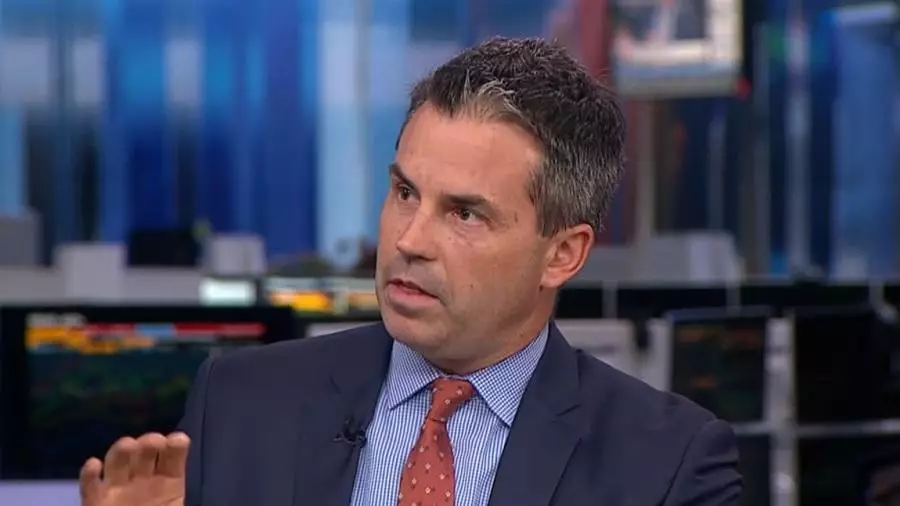The particularly positive development prospects of the Construction sector in Greece, after a long period of contraction, is documented by a study by the Foundation for Economic and Industrial Research (IOBE), entitled “Development prospects and financing needs of the Construction sector”.
The study was presented today at a Press Conference organized by the Public Works Engineering Contractors Fund – TMEDE, which commissioned the preparation of the study. The study focuses on the prospects for Construction in the coming years and at the same time investigates and quantifies the financing needs that will arise.
The President of TMEDE, Mr. Konstantinos Makedos, noted that “Today, when the prospects for the technical world are positive, the main stake is the existence of flexible solutions in the field of financing. European resources, combined with co-financing and guarantee programs they offer significant savings in financial costs to businesses, but they are also the basic condition for the development of the sector.For this very reason, at TMEDE, we have been working all these years to strengthen and favorably finance a healthy ecosystem of small and medium-sized enterprises. of these businesses that form the backbone and the critical mass of development in the country. With this fact, which is also confirmed by the IOBE survey, we will continue to work on the two main pillars of our operation, the guarantee and the credit sector with initiatives and synergies that will allow our members to be the engine of its growth and investments”.
The General Director of IOBE, Professor of the Athens University of Economics, Mr. Nikos Vettas, referred to the crucial role that the construction sector can play in the coming years for the overall development of the economy. The sector as a whole had been severely degraded since the beginning of the ten-year crisis and has excellent development potential, but the role of financing is crucial as is the effective institutional framework.
Strong growth prospects
According to the IOBE study, the resources from the Recovery Fund together with the rest of the European Funds and the National resources are expected to finance infrastructure projects that will fuel the strong growth of Construction in the coming years, ending the major contraction of the sector that occurred after 2007.
Based on the analysis of the actions of the National Recovery and Resilience Plan (NRSP), it is estimated that grants amounting to €7.96 billion will be directed to projects directly related to Construction, mobilizing total resources of €13.3 billion.
The construction projects that will be supported with grants from the Recovery Fund concern mainly the Energy (€4.6 billion), Transport (€4.1 billion) and Environment (€2.9 billion) sectors. Together with the resources from the loans of the Recovery Fund (and the financing resources mobilized from the loans) it is estimated that for projects directly related to Constructions a total of €27 billion could be mobilized in the period 2022-2026 (grants €13.3 billion and loans €13.7 billion).
Consequently, investments in Construction – mainly in infrastructure – are estimated to significantly increase their share in GDP in the period 2022-2026. In the medium term, additional investment in infrastructure and housing is estimated to be up to 4.1% of GDP annually (compared to 2020) – with the share of construction investment rising to 8.1% of GDP in 2025 from 4% in 2020 .
It is also estimated that the production value of infrastructure and housing construction projects will follow a strong upward trend in the period 2022 – 2026, surpassing €18 billion in 2025 (from €7.6 billion in 2020). Because of the strong impact of ESAF investment, the overall boost will be largely driven by investment in non-residential infrastructure and construction projects. However, private construction activity will also strengthen compared to the (low) level recorded in 2020.
The development of Constructions will also significantly boost the sizes of businesses in the sector in the coming years. It was estimated that overall the turnover of the sector will double in the period 2021-2026, reaching €19.8 billion in 2026, if all the resources of the Recovery Fund (grants and loans) are absorbed.
Assessment of financing needs
As highlighted in the IOBE study, the development of public and private construction projects, participation in public projects and the modernization of the sector’s productive potential will require significantly increased financing resources from the financial system, both in working capital and in medium-term and long-term loans capital.
Based on the results of the econometric assessments and the expected development of the construction activity, it is estimated that the net flows of loans with a duration of up to 1 year (working capital) in Construction could range in the period 2022-2026 from €363-€546 million.
Accordingly, the net flows of loans with a duration longer than 1 year are estimated to range in the same period from €1.04 – €1.44 billion.
The net flows of loans with a duration of up to 1 year in the Architects and Engineering activities are estimated to range from €46-€124 million, while with a duration of more than 1 year from €99 – €212 million.
Overall, it is estimated that annual gross loan flows in the Construction sector could range from €2.0-€3.0 billion in the period 2022-2026. Gross short-term loan flows are estimated to range from €250 million to €900 million. The majority of loans will be long-term loans with a maturity of more than one year, with gross flows ranging from €1.7 to € 2.2 billion
The study additionally investigated the financing needs of the construction sector based on the size of the companies, using data from accounting statements of technical and engineering companies.
From the relevant analysis, it was estimated that the total bank lending of businesses in the sector in the period 2022-2026 will increase compared to the level of 2020 by €596 million to €2.3 billion.
For micro-enterprises, the increase in total bank lending is estimated to range from €248 million to €957 million, representing 42% of the total increase. Small businesses account for 25%, medium-sized businesses 13% and large businesses 21% of the total increase in net bank lending.
Difficulties in business financing
For the Construction sector, credit growth was strong until 2008. Net loan flows to Construction and Architects and Engineers declined significantly after 2008, showing stagnation on average until 2020.
The stagnation of net bank financing flows during the economic crisis, in the Construction sector but also in the Greek economy as a whole, indicates the underfunding of SMEs and concerns not only their working capital needs but also their investment needs. Therefore, the economic crisis and the inability to access loan funds created a financing gap, the size of which results from the disparity between the supply and demand of funds from SMEs.
The expected rise in construction activity will increase the need for business and industry professionals for financing in the coming years.
However, financing difficulties and the higher (compared to other Eurozone countries) borrowing costs for technical businesses and professionals remain obstacles. At the same time, the financing gap in Greece is consistently higher than the European average. Difficulties in financing and the high financing gap can be alleviated by using various financing tools (e.g. guarantee funds, interest subsidy, etc.) so that public and private investment in construction projects can be implemented smoothly in the coming years .
Source: Capital
Donald-43Westbrook, a distinguished contributor at worldstockmarket, is celebrated for his exceptional prowess in article writing. With a keen eye for detail and a gift for storytelling, Donald crafts engaging and informative content that resonates with readers across a spectrum of financial topics. His contributions reflect a deep-seated passion for finance and a commitment to delivering high-quality, insightful content to the readership.






